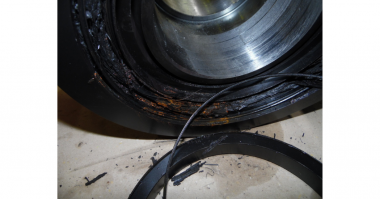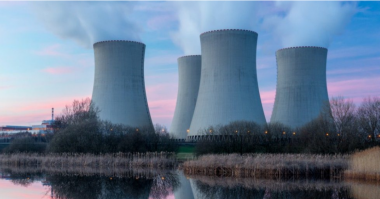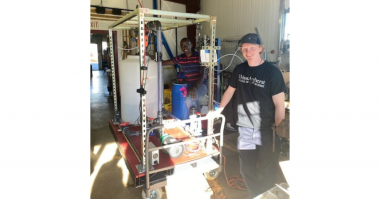You already know that water usage can be expensive; but did you know that water usage is representative of energy waste?
Author: Henri Azibert
Water usage is prevalent throughout industrial processes, and for the most part, there has been an abundant supply. Placing manufacturing facilities next to rivers has been long standing practice, and water has been freely taken and then discharged back into its source. In many instances, it is used for cooling purposes. Power Plants use it to condense spent steam, steel mills to quench molten metal, and in general it is used for cooling of equipment in hot processes or high energy machines. There are also times when it is introduced into the process for a variety of reasons or purposes.
There are two factors that are now driving facilities to reduce or restrict the use of water.
First, is decreased availability in an ever increasingly densely populated environment. As population grows, the demand for water increases; so, even with a stable supply, the availability is reduced. However, weather patterns’ wide (and too often wild) fluctuations also contribute to an unpredictable water supply. Whether it is drought and lack of water, or even flooding, that compromises the cleanliness of the supply and/or causes damage to the infrastructure delivering it to its point of use, the supply is not at all stable.
All these factors contribute to costs increases that can no longer be ignored or dismissed as incidental. One consequence of the limited supply is that the waste water must to be treated to be reusable as much as possible. And often, the cost of treating the waste water is higher than the cost of the clean water before it is used. Increased costs are a major driver for industry to simply reduce the water consumption, regardless of the negative impact that overuse of water can have on the environment.
There is another factor that is typically overlooked; the fact is, in many cases, water usage is representative of energy waste. This aspect is not evident, but whenever water is used for cooling, it represents an energy loss. Of course, cooling is needed in many systems, but any reduction in cooling needs is usually accompanied by an equivalent increase in energy efficiency.
In the case of a motor or an engine, any cooling required is an energy conversion from the power supply, electric or chemical, into heat instead of usable work. The more cooling, the less work from the energy source. There is also the cost and complexity of the cooling system, the piping, the pumps, the cooling towers, heat exchangers, radiators, filters, regulators, and valves – all necessary to make the cooling system work. Any reduction in cooling water usage can be translated into energy savings and reduced infrastructure or capital costs.
Of course, some processes cannot operate without some cooling. Many chemical and refining processes involve high temperature levels. The choice of the equipment used to contain or control the process will have a big impact on the cooling needs. From materials to the mechanical equipment chosen, much can be done to render the process as adiabatic as possible (occurring without loss or gain of heat). An example could be the use of a synthetic oil to lubricate bearings instead of conventional oil and water cooling. In sealing systems, it could be the use of high temperature bellows seals instead of a standard seal where the environment is cooled with a low temperature flushing system. Instead of a free-flowing flush into the system, the use of restriction devices, bushings or orifices can significantly reduce the amount of water usage. Using dual seals instead of single seals can lead to tremendous water consumption reduction.
There is one area, again often overlooked, where this can be most important. In any process where water is introduced for cooling or isolation purposes and then needs to be removed via evaporation, the costs can be staggering. A simple calculation can illustrate the magnitude of the problem. As an example, let’s look at how much money can be saved in energy costs by simply reducing the amount of water that needs to be evaporated by just one gallon per minute. We can all agree that this is not all that much!
The heat of evaporation of water is 2,257 J/g; and 1 gram of water is just about 1 cubic centimeter. This means that to convert 1 gram of water at 100 oC (212 oF) to 1 gram of steam at 100 oC, 2,257 Joules of heat must be absorbed by the water. Conversely, when 1 gram of steam at 100 oC condenses to give 1 gram of water at 100 oC, 2,257 Joules of heat will be released to the surroundings. A few conversions to bring this in Imperial units: 1 joule = 0.000948 Btu; thus 2,257 Joules = 2.140 Btus. That does not sound so bad.
1 gallon = 3,785 cubic centimeters. So, the energy required to evaporate one gallon of water is: 3,785 cc/gallon x 2.140 Btu/cc = 8,100 btu/ gallon. If we do this continuously: 8,100 btu/ min x 60 min/hour x 24 hours/day x 365 days per year = 4,257,360,000 btu/year. That looks like a lot of energy!
One more conversion: 4,257,360,000 Btu = 1,247,709 kilowatt hour, or at $0.10 per Kw hour, the cost of evaporating 1 gallon per minute for a year is $124,771. This does not even take into account the energy required to bring the water from ambient to 212 oF, or the cost of over half a million gallons of water that was eventually evaporated. It can definitely be worth it to figure out how to reduce water usage by just a very small rate of 1 GPM.
There is no question that water consumption can be very expensive. The question is…what will you do about it?
Empowering Pumps wants to know…what will be your water legacy?





Comments